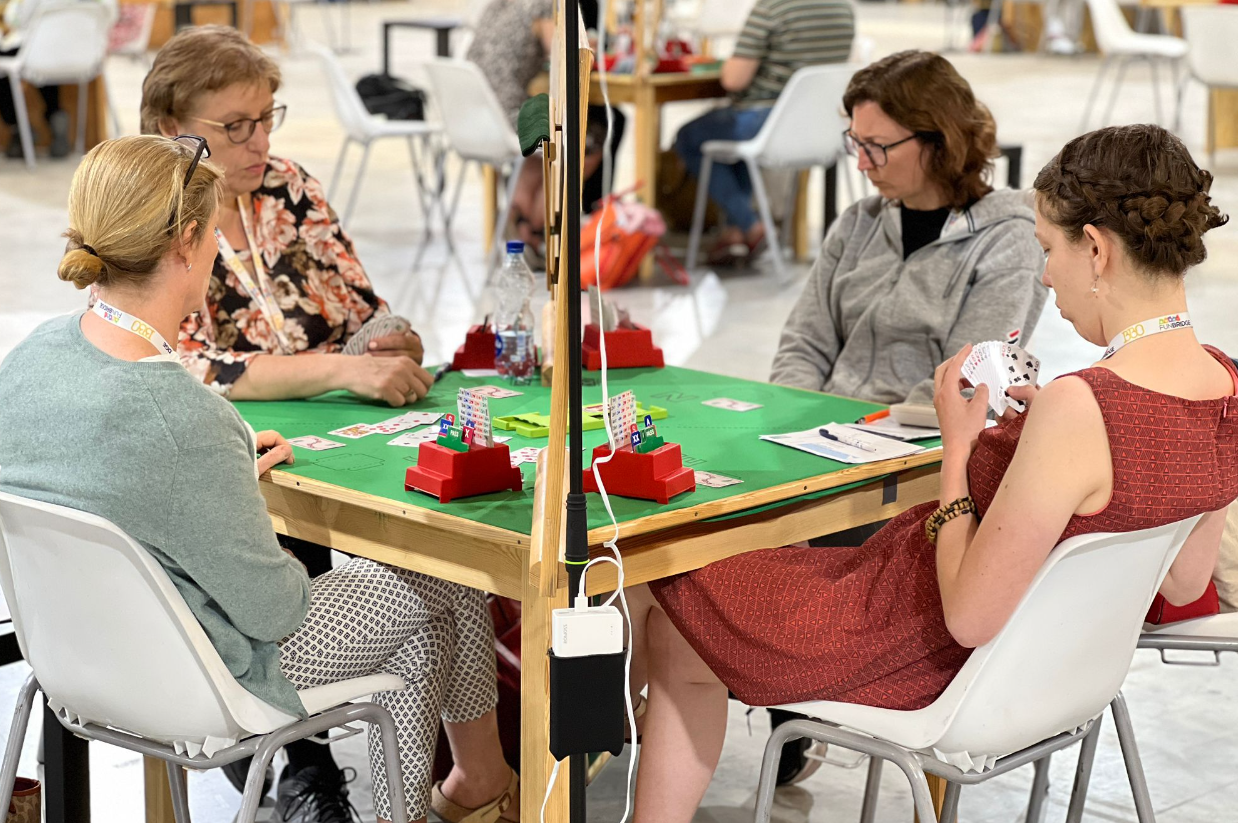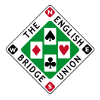Screens have been used in top-level live events for more than 50 years and are generally welcomed by players because they reduce the number of requests for rulings since they make it harder for unauthorised information to be unintentionally transmitted and they greatly reduce the awareness on the other side of the screen of any breaks in tempo. This idea has been adopted for online bridge by RealBridge, where it is even more effective.
On RealBridge, during the auction and play, the video and audio of the two players on the other side of the screen are disabled. You can see and talk to your own screenmate at any time (North & East are screenmates, as are South and West). At the end of the auction, when the opening lead has been made, the cards of dummy are revealed to everyone. Only when there is a claim, or in between boards, can you see all four players. At the end of a hand you can delay the start of the next board if you want to talk more to your partner, such as to discuss the hand that has just finished.
Most people find playing with screens very enjoyable and also surprisingly sociable.
Note that BBO does not have screens so they are not used for any daily EBU/BBO games, nor for those regional finals of the National Pairs that are on BBO.
The following events on RealBridge have screens with verbal alerting and announcements:
The following events on RealBridge have screens with written alerting and announcements:
The following events on RealBridge do not have screens, and use face-to-face alerting with verbal announcements:
- Ranked Masters Pairs
- National Pairs final
- Portland Pairs
- Corwen Trophy (when played online)
- Pachabo Cup (when played online)
- All events at the Winter Midweek Online Congress
Playing at face-to-face championships with screens (included for interest)
Some players are intrigued about what it is like to play with screens and trays. Perhaps you have seen them in photos or videos, or read about them.
Well, the actual screens are rather heavy, and the tables are bigger than normal. The wooden trays where bids are placed are specially made for event organisers.
Here are photos from last year’s Junior Camrose and European Championships. At each table, North and East are on the same side, and South and West are on the same side.
Bids are placed on the tray and slid through to the other side of the screen. In the first image, West is contemplating his bid, his partner has just bid 3D and the player sitting South has passed.
The second image shows the action during play. The hatch is opened, so that dummy and cards played are visible. The players cannot see each other’s faces, because the screen is still there.


